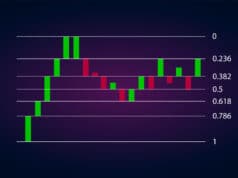Interest rate parity is an assumption presuming that the rate of a swap in the future is equivalent to the imbalance linking the domestic lending estimate and the foreign lending estimate multiplied by the current estimate.
Covered interest rate parity
This is a presumed state that arises when there is a balance on how economies relate in terms of their lending estimates to their future and current prevailing market rate of exchanges.
It demonstrates the unavailability of potential for the process of concurrent buying and selling of legal tenders in two or more FX markets.
The objective is to make gains by capitalizing on the exchange-rate differentials in various markets utilizing forward settlement.
Future settlements are frequently utilized to earn speculative profits by leveraging lending rate differentials.
Covered interest rate parity assumptions
Easy swapping of the domestic monies for external ones by investors is the foundation that the covered lending estimate is pegged on.
Higher gains arising from currencies held by investors are a result of resource mobility and changeability.
That is not to suggest that local and international investors will receive similar returns, but that a single investor may anticipate equal rewards from any option.
Covered interest rate parity formula and example
This is the numerical formula for IRP
Forward estimate of exchange (Fo) = Spot rate of exchange (So) X (1 + Lending rate A)^n / (1 + Lending rate B)^n
The gap in the dispersion of Fo and So is known as a forward premium.
It’s impossible to borrow one country’s legal tender and transact it for another, transact it back to the original one and get returns. This is the gauge of the accuracy of the IRP.
The forward estimate of exchange consented upon today for external money market deals, which will take place at a future date. A forward contract is a consent to make such a swap in the future at a rate consented upon today.
The following is an example of lending rate parity. Presume that the present rate of exchange, linking the United States and country in comparison, is $1.2544/1.00.
Take for granted that the United States has a lending rate of 4%, and the country in comparison has a rate of 2%. This results in a future estimate of $1.279/1.00.
Uncovered interest rate parity
UIP is not the same as CIP and entails currency probability and hypothesis. Because we are alive to this ambiguity, there is usually an uncertainty of UIP holding.
The majority of factual data shows uncertainty generally to UIP holding. Nonetheless, financial experts continue to utilize UIP since it is useful in model development.
The concept of UIP is straightforward. In terms of shares, there are two choices:
- Purchasing an internal bond. Its return (in the native legal tender) is i.
- Purchase an external bond as a second alternative. What it gives back (native legal tender) is equal to I + x.
The projected change in the swapping estimate from now to the future is denoted by x. I and i are definite, while x is a guess.
While the first stake produces a predictable return, the second does not.
Importance of interest rate parity
The parity helps investors in knowing how and why the estimated swapping price of a particular currency pair was arrived at.
Any change that occurs to the lending rate of any given country positively or negatively directly affects the desired spot rate at a given date in line with the IRP formula.
Let’s take the EURUSD pair as an example. Any increase in the lending rate of the euro in the
euro economic zone, while the lending rate in the economy remains the same, results in the appreciation of the EUR in comparison to the USD.
Anyone interested in trading the above pair at the said time would be affected by that change.
Uncovered and covered interest rate parity relationship
The variance is relatively small that’s linked to the two IRPs. For the uncovered interest rate parity, a forward contract is the only financial instrument that can satisfy the aspect of no profit-making when money is borrowed to be traded in the forex market.
Traders in the covered IRP are less concerned with whether they should invest in their domestic lending rate or a foreign nation lending rate.
How is the current market rate and future rate related
The spot rate is the prevailing rate of exchange. While the forward rate is to the agreed-upon future estimate of swapping in future contracts.
For example, if a Chinese electronics company believes the US dollar to be considerably lower in a year and has a substantial order to export to America, it may be able to transact a currency forward to lock in a more advantageous rate of exchange.
Conclusion
Everyone who engages in the money market needs to comprehend the fundamentals of forward rate of exchanges and risk cushioning methods before they can work out which rate is most appropriate to use for their current account.
In the case of the EUR/USD, EUR’s rise and shrinking of value compared to the United States dollar demonstrates how successful these investments may be.
This can be achieved by checking to see if prevailing conditions are satisfactory, the plans are ok, and there are experienced expertise.
An investor in this forex pair of EUR/USD will be able to profit from lending rate differentials by analyzing how the EUR and USD currencies are related.




